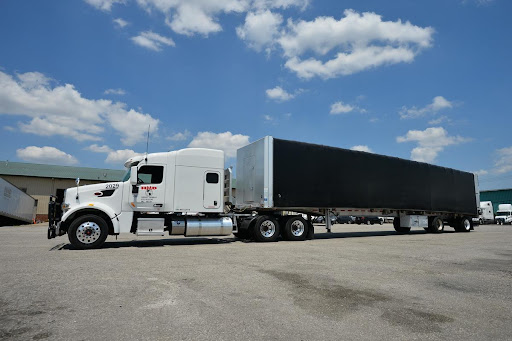The Evolution of Truck Driving: A Brief Overview
From the days of hard manual labor and basic navigation to highly sophisticated, technologically driven, the outlook of truck driving indeed has transformed greatly over the decades. Trucking during the early 20th century was an up-and-coming industry, marked by quite unsophisticated vehicles and a general lack of infrastructure. As highways expanded in the mid-century, so too did the trucking industry, paving the way for truck driving jobs and long-haul deliveries that became the backbone of the American economy.
Fast forward to the 21st century, and we find a unique intersection of technologies that have completely revamped the job of truck driving. Automation and artificial intelligence introduced the autonomous vehicles promising to change the face of logistics. Inverse to this, GPS and telematics systems bumped up route optimization, enhancing safety to a great extent and allowing drivers to focus more on the road rather than worry about navigation.
Yet, with this evolution has come a double-edged sword. Where technology could solve driver shortages and improve efficiency, it also brings questions about job security and the need for retraining. Looking into 2024 and beyond, understanding this evolution is crucial for stakeholders in the trucking industry in terms of how to navigate the road ahead.
Current Trends in the Trucking Industry
As we forge into 2024, the trucking industry is set amidst some critical and transformative trends that are really redefining the way freight transportation used to be done. Among the most apparent changes, the increased technology adaptation, particularly in areas of automation and electrification, is viewed. In this regard, companies are investing in autonomous driving systems on a large scale, with several pilot programs already putting self-driving trucks on public roads. That is, effectively, a leap in technology that may result in efficiency and reduction in labor costs but does raise very pressing questions of job security to the classic truck driver.
Meanwhile, sustainability is of equal focus. There is more impetus toward electric and alternative fuel vehicles-both due to regulatory pressures and increasing sensitivity to carbon footprints. Hydrogen fuel cells and battery electric trucks are among the latest new toys being tested by operators with eyes on both low emissions and longer-term savings in fuel costs.
Besides, the sector had to deal with consistent supply chain problems, aggravated by geopolitical tensions and changing demand. If anything, that brought into focus the need for more robust logistic strategies, motivating companies to reshape their supply chain models and invest in real-time data analytics to make better decisions. These combined trends mark an inflection point for the trucking industry, where new opportunities are weighed against a backdrop of challenges in evolution.
Technological Advancements Shaping the Future

Driving a truck in 2024 will be different, with a number of changes in technology that will say much about it. One of the major innovational shifts is the oncoming autonomous automobiles. Waymo and Tesla are leading in developing and testing independent self-driving trucks cruising along highways with almost no human help. While this shift is believed to increase safety by reducing human error, it also addresses the growing shortage of drivers by potentially reducing the need for drivers in the traditional sense.
Telematics and IoT are the other developing fields that have totally revamped fleet management. Analytics from real-time data helps firms to work out routes in order to cut down operational costs by monitoring the health of the vehicles and enhancing fuel efficiency. Along with electric and hybrid trucks, these will open a way to go greener and help mitigate environmental problems with no detrimental impact on productivity.
However, most of these innovations also come with enormous challenges in their wake, including regulatory hurdles and the dire need for immense infrastructure improvement. Furthermore, cybersecurity regarding connected vehicles is prime in ensuring that connected vehicles are safe from all sorts of threats. Going forward, the balance between embracing innovation and dealing with the consequences will be what defines what truck driving will be like in 2024 and beyond.
The Role of Autonomous Vehicles in Trucking
By 2024, the role of autonomous vehicles in trucking is going to change. Artificial intelligence and sensor technology are making great strides-what was once considered a very faraway dream has now turned into a certain reality with leading firms like Waymo and Tesla testing fleets of these self-driving trucks, promising that the rides on our highways will be more efficient and safe.
The main opportunity that might attract a large firm to adapt to autonomous trucks could, first, be driven by huge savings. This is because autonomous trucks have the capability to travel around the clock, which allows the time for delivery to be drastically reduced, while companies may further optimize the logistics. Besides this, a reduction in human error may imply fewer accidents and, therefore, safer roads for all.
The challenges are galore: the transition to autonomous trucking would raise serious job displacement concerns for millions of truck drivers. The industry would have to grapple with retraining programs that could equip the current workforce with new skills. Finally, regulatory hurdles and public acceptance are significant barriers against its widespread adoption.
Great and innovative, though it may be, this transitional phase requires a delicate balance with human involvement if the future of trucking is to be mutually beneficial for all stakeholders: businesses, workers, and consumers alike. Perhaps the road going forward will be strewn with technological advancement, but the way forward will be thoughtful.
Regulatory Changes Impacting Truck Drivers
The close of 2024 will see continued regulatory changes revolutionize the industry of truck driving, presenting opportunities and challenges for both drivers and companies. The FMCSA will extend safety standards and ELD regulations to ensure that the number of accidents involving driver fatigue decreases and general road safety improves. While such regulations may be beneficial in improving the welfare of the drivers themselves, at the same time, they increase the fleet owners’ cost of operations due to investment in compliance technologies and training.
Beyond that, states are moving increasingly to embrace green regulations that provide impetus for electric and zero-emission trucks. This shift not only meets global sustainability goals but also opens new frontiers in innovation and job opportunities within the electric vehicle industry. On the other hand, it is a very huge investment in electric trucks and infrastructure, which is daunting to many, especially smaller operators.
With the growing demand for more supply chain transparency, the regulations concerning data sharing and driver privacy are likely to change. All this will make the environment dynamic, wherein the truck driver must be well informed and adaptable enough to know his way out through the maze of regulations and make full use of the emerging opportunities for growth in a transforming industry.
Opportunities for Growth in the Trucking Sector

- Technological Changes: AI and IoT integrations in logistics allow for route optimization, reduced fuel consumption, and assurance on safety, hence the advancement of operations has been far easier.
- Sustainability Initiatives: With the modernity going green in every sector, it is expected that electric trucks and alternative fuel trucks will be adopted more and more, in order to meet regulations but also appeal to environmentally sensitive customers.
- E-commerce Boom: Continued growth in online shopping keeps the demand for effective freight services, hence setting a good platform on which trucking companies can expand their services and presence.
- Workforce Development: Addition of training programs with offering incentives to new drivers will help bridge the gap in the labor force, hence opening numerous career growth avenues in the sector.
- Last-Mile Delivery Solutions: The need for innovative last-mile delivery options will continue to increase due to growing urbanization, allowing trucking companies to take advantage of the increased demand for speed and efficiency.
Challenges Facing Truck Drivers in 2024
- Regulatory Changes: Increasing regulations around emissions and driver safety can be costly to implement operational changes and increase costs related to operations and compliance.
- Driver Shortage: The sustained shortage of qualified truck drivers has passed many burdens onto the current number of drivers, such as extended driving hours, which raise the risk of driver burnout.
- Technological Integration: While strides within autonomous trucks, for instance, have shown great promise, they also instill some uncertainty. Drivers may be required to learn new technologies that can be intimidating and even change what their jobs truly are.
- Unpredictable Work and Income Variability: Financial instability, world events, or shifts in consumer demand can result in unforeseen workloads and variable income among drivers.
- Health and Well-being: Spending a lot of time on the road causes health issues, such as obesity and mental disorders. It is of utmost importance that drivers take their health into consideration despite hectic schedules.
The Importance of Driver Training and Safety
Driver training and safety are paramount in 2024 while trucking works its way through complicated circumstances. With the growing emphasis on automation and technology, there is a great need for skilled drivers with this capacity for learning and adaptation to new systems. Comprehensive training programs are not just about understanding advanced vehicle technologies, but also about instilling a strong culture of safety.
New regulations and industrial standards will be developed requiring drivers to have constant training in safety procedures, defensive driving methods, and emergency response plans. Similarly, the drivers shall be conversant with how to interface with systems that are becoming more autonomous in order to ensure smooth operations maintain safety on the road.
In return, investment in driver training will pay off in a significant reduction in accident rates, lower insurance costs, and an improved overall image of the trucking industry. Those companies found to be placing great emphasis on safety with strong training programs will be attractive for top talent and thus have a better ability to retain skilled employees. In a constantly changing environment, a commitment to driver training secures not only the life of the person behind the wheel but also the continuity and growth of the trucking industry beyond these years.
Sustainability and Environmental Considerations
Going into 2024, the trucking industry looks toward a future where sustainability and environmental concerns are at the top of its evolution. With growing concern over climate change and air quality, truck operators are under increasing pressure to go green. For this, the march toward green is being pursued in views that electric trucks promise huge cuts in greenhouse gas emissions. Manufacturers are investing heavily in battery technology to extend their range and efficiency, making electric options increasingly viable on longer-haul routes.
Beyond electrification, other fuels, such as hydrogen and biodiesel, are also emerging in popularity, providing clean-burning options to greatly reduce the carbon footprint produced by traditional diesel trucks. Other ongoing innovations within the industry include aerodynamic designs and lightweight materials that better fuel efficiency, further reducing emissions and operational costs.
But this shift toward sustainability comes with its problems. High initial investment in new technologies, inadequate recharging infrastructure, and extensive training of drivers to deal with new systems are just a few of the challenges that have to be met. On the other hand, commitment to sustainability meets the demands of increasing regulatory pressures and increasingly appeals to eco-conscious consumers. Not only is it a call to environmental imperative, but also embracing changes is a strategic move toward a more resilient and future-ready trucking industry.
The Future Workforce: Attracting New Talent to Truck Driving
In an industry that’s crucially transforming into 2024, new talent will be critical to battle the persistent driver shortage. With estimates revealing over a million drivers will be required within the next decade, it’s high time for companies to ensure that their recruitment strategies are freshening up their appeal to a newer, tech-savvier worker.
The trend also involves the industry’s adoption of technology and flexibility in the engagement of its drivers. Many firms now invest in high-tech training programs, including virtual reality and simulation for an altogether different learning experience. Besides, offering flexible schedules and competitive pay packages may be appealing to millennials and Gen Z workers who have a strong work-life balance.
Additionally, marketing the benefits of a trucking career-engineering job security, career growth opportunities, and time on the road-may help rebrand the industry. Partnerships with schools and outreach programs are also very instrumental in exposing youth to the industry early.
Therefore, innovation, rebranding the profession, and touting the value of a truck driving career will be pursued vigorously by the industry with the idea that the workforce will be diverse and dynamic, aimed at meeting the challenges of the future.
